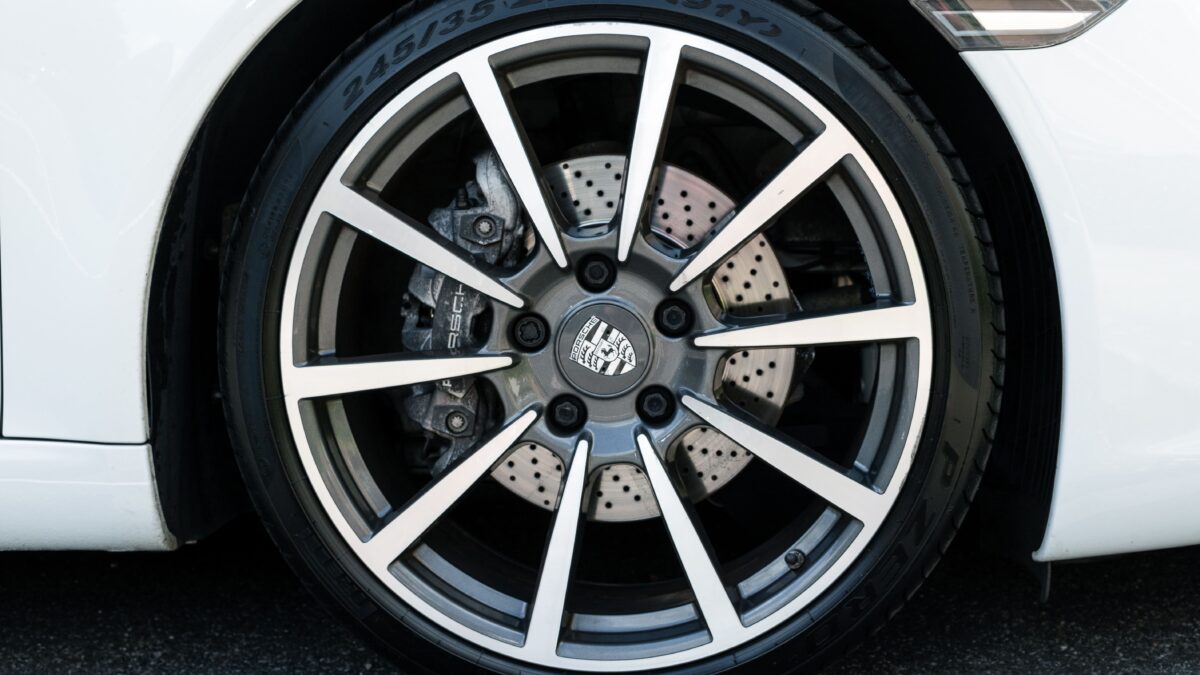Will any rim just fit any car? The answer is NO. That’s because the rim’s lugs must be compatible with the wheel bolt pattern. If fitted properly, the bolts can be fastened to the rim correctly, and this is essential for your road safety.
Please click here to go to a bolt pattern guide for most car makes.
Wheel Bolt Pattern Explained
Look at your car’s wheel, and you will see at least three holes around the large hub bore located at the wheel’s center. They are called lug holes and are usually five, but you can also find cars with three, four, six, and even eight holes. The arrangement of how the lug holes are distributed around the hub is known as the wheel’s bolt pattern (or lug pattern).
While many people overlook the bolt pattern, it performs a crucial task of ensuring the wheels are properly fitted on the hub and the car. Hence, the bolt pattern determines which wheel fits on your vehicle. Remember, the car can only accept a wheel whose bolt pattern is identical to the original equipment manufacturer’s. So, if you’re buying an aftermarket wheel, double-checking is a must to ensure it fits your vehicle.
Bolt Pattern Types
The five-lug pattern is by far the most common. It is typically made for luxury, standard, mid-size, and full-size vehicles. Other bolt pattern types include:
Four-lug bolt pattern: The four-lug pattern is a more common pattern than its counterparts (save for the five-lug). It is meant for mid-size and compact vehicles.
Six-lug bolt pattern: This is manufactured for mid- and full-size SUVs and trucks. Since they are readily available in the market, finding them is not a big deal.
Eight-lug bolt pattern: Like the five-lug pattern, an eight-lug pattern is meant for standard, mid-size, full-size, and luxury cars.
How is the Wheel Bolt Pattern Measured?
Perhaps the easiest way to determine your car’s bolt pattern is to look at its wheels. Most rims feature a stamp on the inside, which lists its bolt pattern. Typically, the pattern consists of two numbers separated by a hyphen, slash, or x. The first number represents the number of lugs, while the second is the diameter of the circle around which they are arranged. For instance, a 4-4.2” bolt pattern means the wheel has four lugs arranged around a 4.25” diameter circle. If that’s what is stamped on your car wheels, then replacement wheels must have the same pattern.
That said, it is important to remember that not all wheels come with a stamp. Besides, some rims are old and rusty, meaning the stamp may have faded away with time. Thankfully, there is another method of measuring bolt patterns. Let’s break it down using two examples below.
- Four-Lug Bolt Pattern
Measuring the bolt pattern of your wheel is likely to be super easy if it (the wheel) has an even number of lugs. However, it would be helpful to have a caliper to ensure the measurement is accurate. Indeed, this is an affordable gadget every DIY enthusiast should have. Using the same tool, measure the distance between the inside edge of one lug and the outside edge of the opposite one. Alternatively, you can measure the distances between the centers of opposite lugs, although you may not get an accurate measurement using this method.
Note: The two methods above won’t apply to odd-patterned rims. Another thing to keep in mind is that the diameter of the lugs does affect their spacing.
- Five-Lug Bolt Pattern
So, why is measuring the bolt pattern on a five-lug wheel a bit more challenging? Well, that’s because the opposite lugs do not help in determining the diameter. Hence, you need some math to measure this bolt pattern. The good news? You need not worry because the calculations are not that complicated. All you need to do is sum up the lug diameter, the diameter of the center ring, and two distances between the central ring and a lug. The result is an accurate bolt pattern measurement; wow!
A point worth noting is that you need to be cautious when taking the measurements since even the slightest mistake can result in inaccuracy, posing a threat to your driving safety.


